Have you ever thought about your Russian Blue cat’s weight? It’s important to know if they are at a healthy size or putting on extra weight. These cats are known for their sleek looks and medium size. But, how much they should weigh depends on their age, gender, and health.
Russian Blue adult females usually weigh 7 to 10 pounds. Males, on the other hand, can be 10 to 12 pounds. But, just looking at the numbers isn’t enough. It’s important to check their body condition, muscle, and see the vet often. You might need to adjust their diet or play more to keep them healthy and happy.
This guide will show you how to keep your Russian Blue cat the right weight. This way, they live their best life.
Key Takeaways
- Adult female Russian Blue cats typically weigh between 7 to 10 pounds.
- Adult male Russian Blue cats generally weigh between 10 to 12 pounds.
- It’s essential to consider body condition and muscle tone beyond just weight.
- Regular veterinary consultations are crucial for monitoring overall health and weight.
- Customized diet and exercise plans help maintain optimal weight.
Introduction to the Russian Blue Cat

The Russian Blue cat is famous for its beautiful looks and fascinating history. It has a blue coat that shimmers, and eyes like the deepest forests. These features make this cat both beautiful and alluring. In caring for one, remember their health is as crucial as their past.
Breed Overview
The Russian Blue is more than looks. They’re sleek with wedge-shaped heads, standing around 10 inches. These elegant cats are quite active. They usually weigh between 7-15 pounds. Knowing about the Russian Blue Cat’s weight helps keep them healthy and happy for years.
Origin and History
This breed comes from Russia’s northwest, connecting them to Russian royalty. They became known in the U.S. back in 1912 and quickly won hearts. To keep them happy, it’s essential to follow their health guidelines and maintain a consistent routine. This way, they feel at home, whether in a small city space or a large country manor.
General Size and Weight
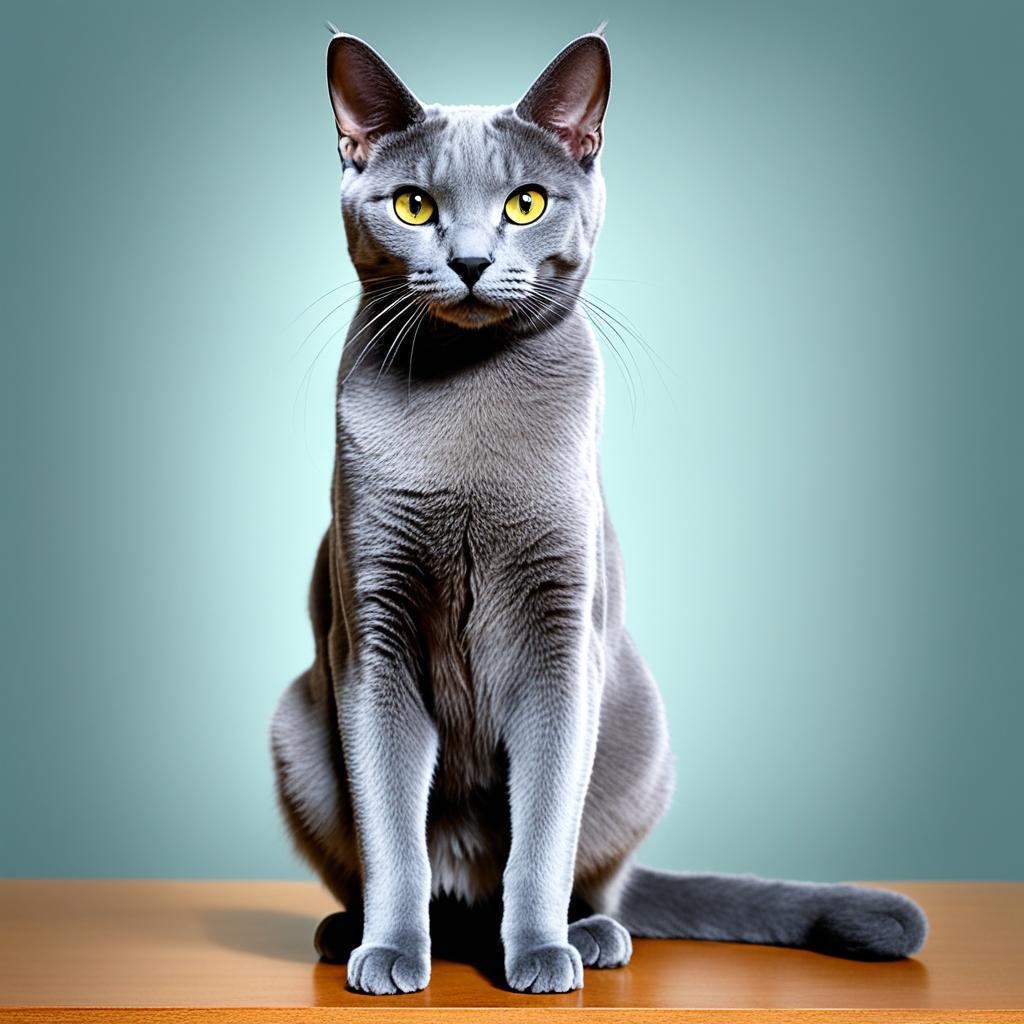
Russian Blue Cats have a medium size and a graceful build. It’s important to keep their weight in check to make sure they stay sleek and elegant. The right weight for a Russian Blue Cat is key to their health and long life.
Understanding Ideal Weight
The perfect weight for a Russian Blue Cat depends on age, sex, and health. Adult females are best between 7 to 10 pounds. Males often reach 10 to 12 pounds. Oh, and don’t forget – good weight is about more than just numbers. It includes checking their muscles, condition, and well-being.
Typical Growth Patterns
Russian Blue kittens grow steadily from birth to adulthood. Their weight goes up fast at first, then slows down. A well-rounded diet and playtime are a must for healthy growth. By watching their growth patterns, we can spot weight issues early and manage their care better.
Let’s look at their growth over time:
| Age | Weight Range | Notes |
|---|---|---|
| Kitten (0-6 months) | 1-6 lbs | Rapid growth phase |
| Junior (6 months – 2 years) | 6-10 lbs | Slower, consistent growth |
| Adult (2-6 years) | 7-12 lbs | Weight stabilizes |
| Mature (7+ years) | Varies | Weight maintenance phase |
Regular vet visits and careful weight management keep Russian Blue Cats healthy. This is true throughout every stage of their life.
How Much Should a Russian Blue Cat Weigh?
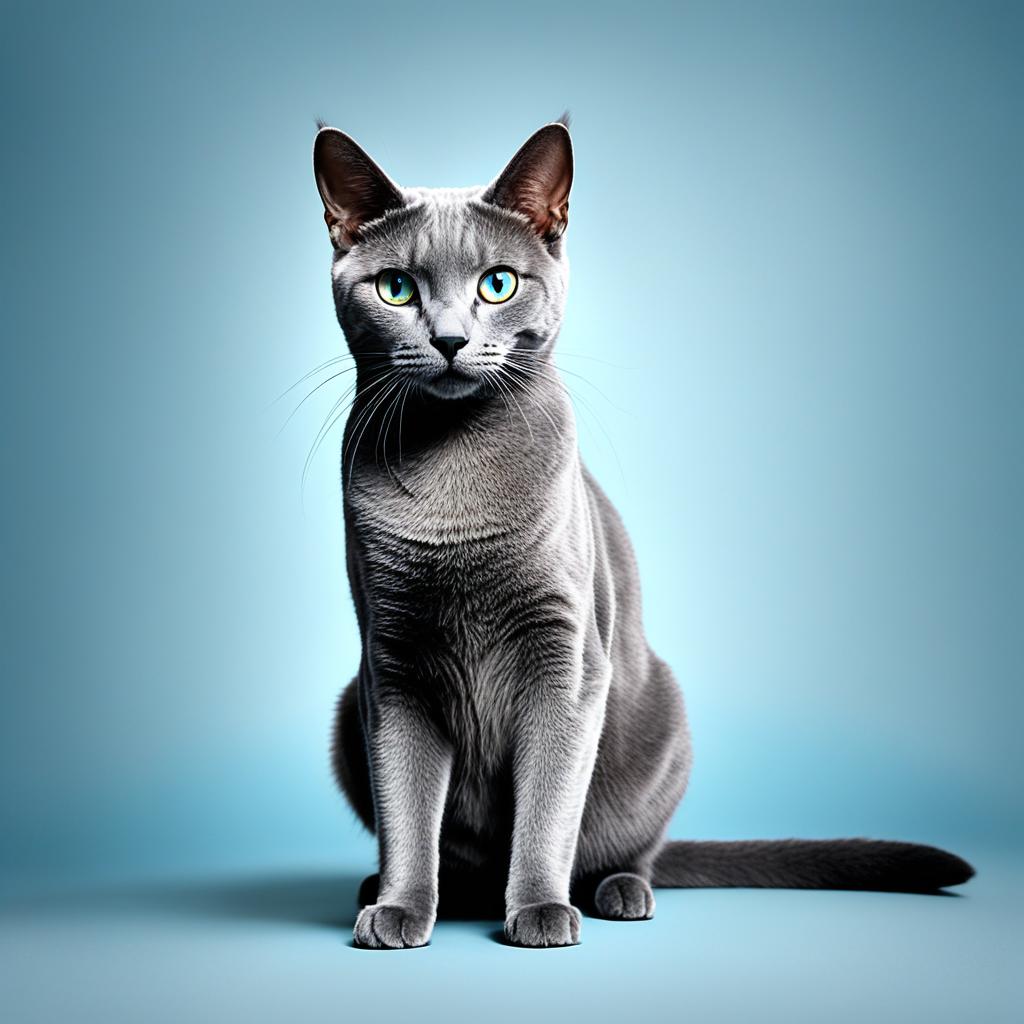
It’s key to know the best weight for a Russian Blue Cat. This ensures they stay healthy and happy. These cats are loved for their elegant blue fur and bright green eyes. We will talk about the ideal weight for both male and female Russian Blue Cats.
Average Weight Range for Males
Male Russian Blue Cats are usually heavier than females. They should weigh from 10 to 12 pounds on average. Remember, these numbers are just a guide. Some cats may be a bit heavier or lighter and still be in good shape. Keeping up with the vet helps keep your cat the right weight.
Average Weight Range for Females
Female Russian Blue Cats are generally lighter than males. They should weigh between 7 and 10 pounds. Just like with males, watching their diet and exercise helps keep them at a good weight.
Making sure your Russian Blue Cat’s weight fits these ranges is crucial for their health. Cats may weigh more or less individually. So, make sure to meet your cat’s specific needs.
Consistent monitoring and adapting to your cat’s dietary and exercise needs are vital for maintaining Russian Blue Cat weight.
| Gender | Weight Range (in pounds) |
|---|---|
| Male | 10 – 12 |
| Female | 7 – 10 |
Factors Influencing Russian Blue Cat Weight
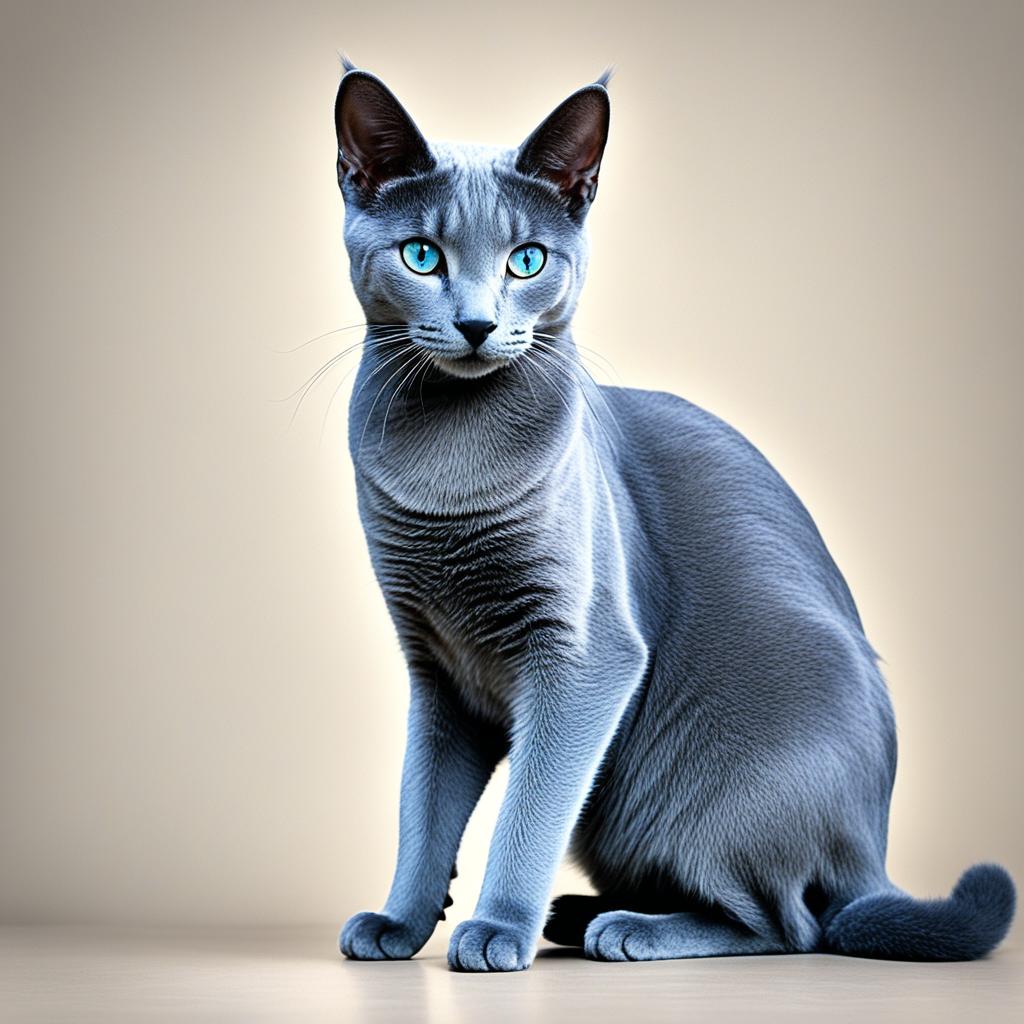
Exploring your Russian Blue cat’s weight involves looking at many things. This includes age, genetics, and more. These factors shape their body size.
Age and Life Stage
At different life phases, a Russian Blue’s weight changes. Kittens rapidly put on weight. This speeds up their growth. Weight gain slows once they’re adults. Senior cats, on the other hand, might lose weight. This happens as they become less active and their metabolism slows down. Each age requires specific care. This ensures they meet the Russian Blue Cat weight standards at every phase.
Genetics and Heredity
A Russian Blue’s weight is also influenced by genes. Inherited traits affect their size, metabolism, and health issues related to weight. Before getting a Russian Blue kitten, look into their family genetics. This can help predict their future weight. Understanding Genetics and Heredity in Russian Blue Cats is vital. It assists in setting up the right diet and exercise. This keeps your cat at a healthy weight for their breed.
Importance of Maintaining the Ideal Weight
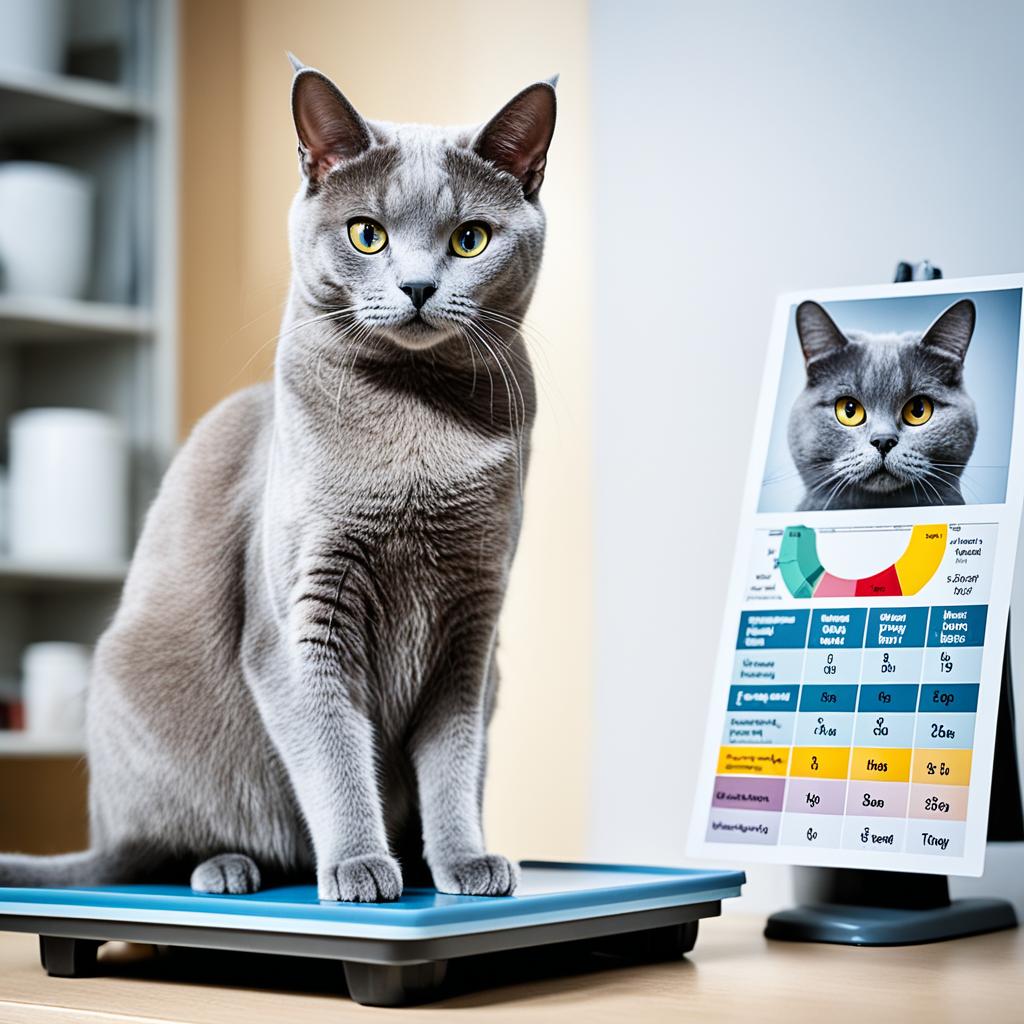
It’s crucial to keep your Russian Blue cat at a healthy weight. This is key for its health and happiness. It avoids many problems like joint stress and diabetes. It also prevents not getting all the nutrients they need.
“Keeping your feline friend at an optimal weight enhances their quality of life and longevity.”
To help your cat stay fit, here are some Russian Blue Cat weight tips:
- Watch their weight often to catch any issues quickly.
- Feed them a diet that fits their age and how much they move.
- Make sure they exercise to stay fit and keep their mind sharp.
Getting the weight right is more than just a number. It’s about their whole health. By looking after your cat’s weight, you’re setting them up for a long, happy life.
Signs Your Russian Blue Cat is Overweight
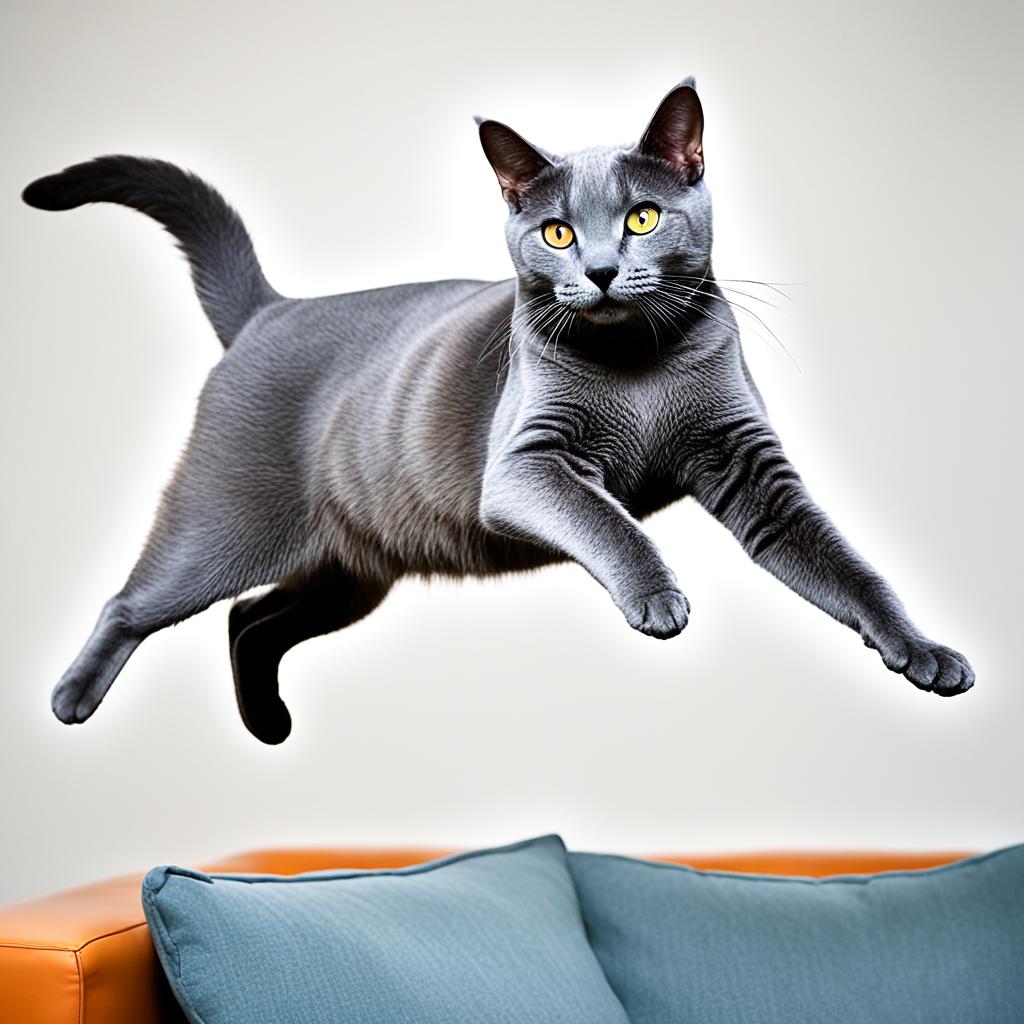
Is your Russian Blue cat showing signs of too many treats or a more laid-back life lately? Keep an eye out for changes. Their graceful nature hides excess weight well.
Common Indicators
Watch for these signs that your cat may be a bit overweight:
- Lack of a visible waistline when viewed from above.
- Difficulty in feeling the ribs when gently pressing along their sides.
- Reduced activity level and reluctance to jump or climb as they used to.
Health Risks Associated with Overweight Cats
Too much weight brings serious health risks of overweight Russian Blue cats:
- Increased risk of diabetes due to insulin resistance.
- Liver disease, particularly hepatic lipidosis, which is common in overweight cats.
- Joint issues and arthritis from carrying extra weight.
It’s important to tackle these issues through diet and exercise. Starting early and sticking to a Russian Blue Cat weight guide keeps them healthy, even with their food love.
Signs Your Russian Blue Cat is Underweight

A Russian Blue cat must have the right weight. Knowing the signs of being underweight is key to their health. Look for these signs:
Common Indicators
To find out if your Russian Blue is too skinny, look at their body and how they act:
- Visible ribs, spine, and hip bones
- Lethargy or decreased activity levels
- Noticeable lack of muscle mass
Health Risks Associated with Underweight Cats
Russian Blues that are underweight face many dangers. These include:
- Malnutrition leading to weakened muscle tone and delayed wound healing
- Immune system deficiencies making them more susceptible to infections
- Potential underlying medical conditions such as hyperthyroidism or intestinal worms
It’s critical to manage your cat’s weight to avoid these Underweight Russian Blue Cat health risks. Visiting the vet regularly is essential. It helps diagnose and solve any health issues quickly.
Diet and Nutrition for Optimal Weight
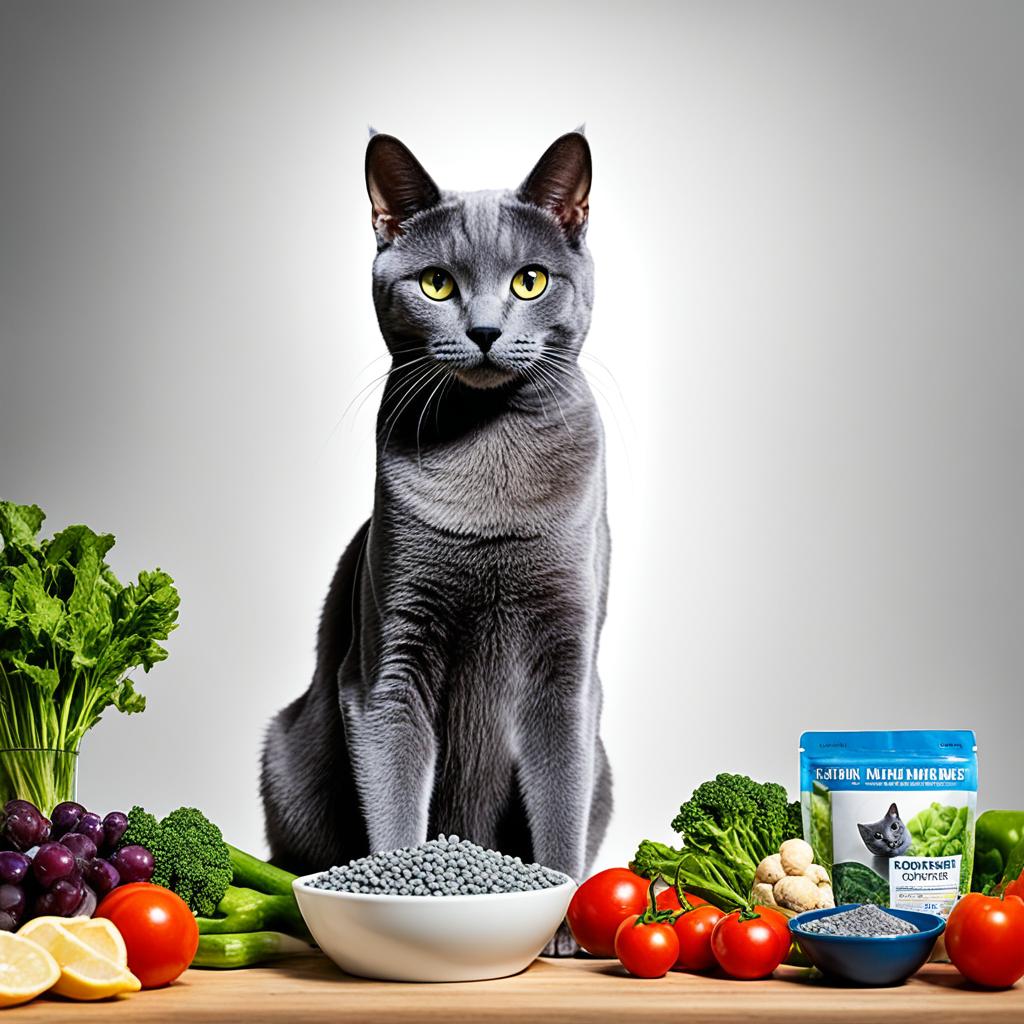
Giving your Russian Blue cat the right diet and nutrition is key for managing its weight. They need lots of protein for muscle growth and to stay active. Good quality canned foods, which usually have more protein and less carbs, are a good choice.
Best Food Options
Picking the right cat food is crucial. Choose ones that have meat listed first in their ingredients. Brands like Hill’s Science Diet and Royal Canin create food just for cats, to give them all the nutrients they need.
| Food Type | Key Benefits | Recommended Brands |
|---|---|---|
| High-Protein Canned Food | Supports muscle development and overall health. | Hill’s Science Diet, Royal Canin |
| Grain-Free Dry Food | Ideal for cats with sensitivities to grains. | Blue Buffalo, Wellness Core |
| Fresh or Raw Diet | Encourages natural eating habits with minimal processing. | Nature’s Variety, Tiki Cat |
Portion Control and Feeding Schedule
For Russian Blue cats, sticking to a regular feeding plan and controlling how much they eat is effective. It stops overeating and keeps their digestion in check. It’s best to feed them twice daily, using a measuring cup for accurate portions.
Having a structured feeding schedule also mirrors a cat’s natural eating patterns. This cuts down on weight issues and makes meal times less stressful for them.
Exercise and Play to Maintain Healthy Weight
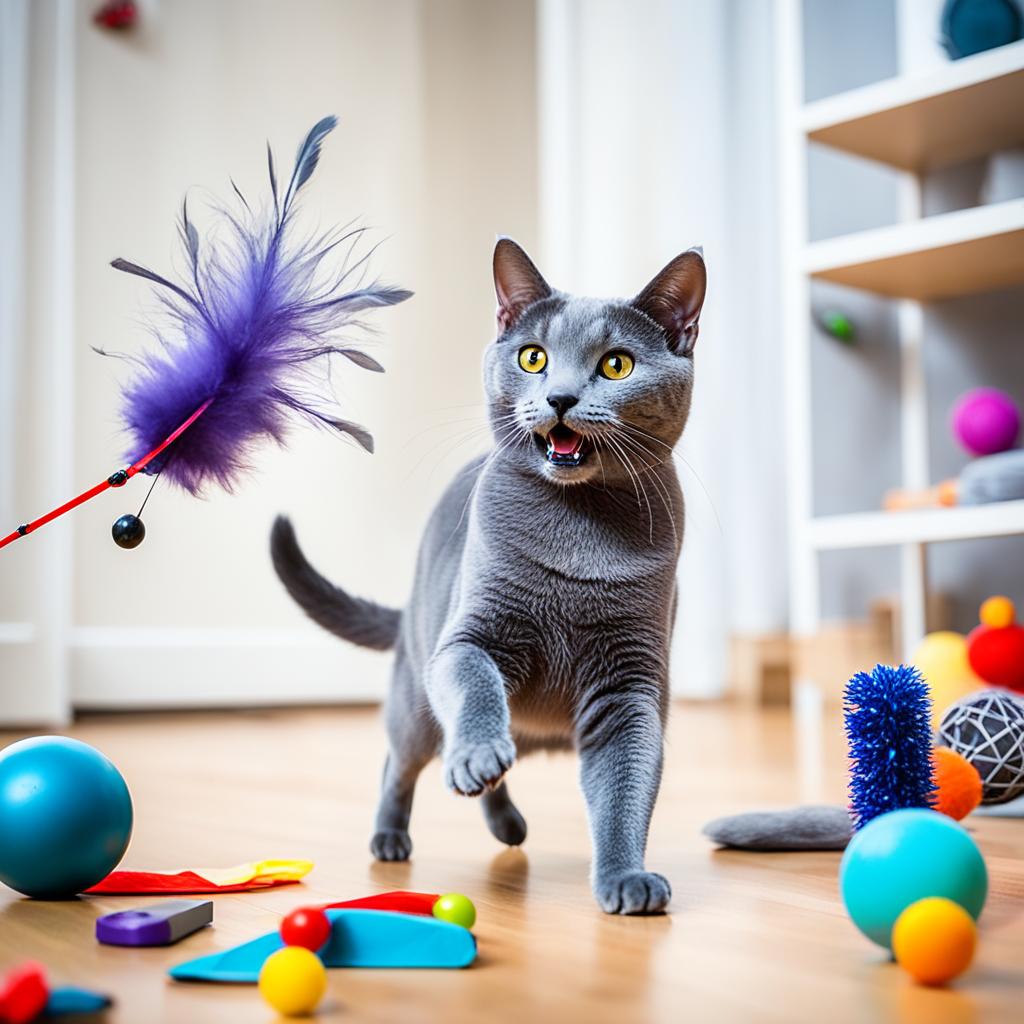
For Russian Blue cats, staying sleek and healthy depends on regular exercise. They enjoy activities that keep them fit and mentally sharp. Games like fetch are not just exercise for Russian Blue Cats. They also help you bond with your pet.
Here are ways to keep them active and well:
- Puzzle feeders: Mealtime becomes interactive, making eating a fun workout.
- Climbing trees and perches: Cat trees or perches on walls are great for climbing and jumping, keeping them agile.
- Laser pointers or feather wands: These simple tools bring out their hunting side and get them moving.
Make sure to play with them every day, using different toys. This keeps their routine exciting. Your dedication to these Russian Blue Cat activities ensures they stay healthy and happy.
Veterinary Advice for Weight Management
Keeping a Russian Blue cat at a healthy weight is more than just eating less and moving more. It’s vital to work with a vet. They can help spot any weight problems early, protecting your cat’s health. Regular vet visits mean your cat’s weight is checked often. This keeps you both focused on staying healthy.
Regular Check-Ups
Seeing the vet regularly is very important. Your cat will get a full check-up, including checking their weight and health. Vets can give you tips for keeping your Russian Blue Cat healthy. Taking a proactive approach will make sure your pet is in top condition.
Customized Diet Plans
Each Russian Blue cat has its own needs, especially when it comes to food. Vets will create a special diet that’s just right for your cat. This diet considers things like how old your cat is, how much they move, and their health. A diet tailored for your cat helps them keep the perfect weight. It keeps them away from being too fat or too thin. A suggested diet by your vet will make sure your cat is getting all the right nutrients.




